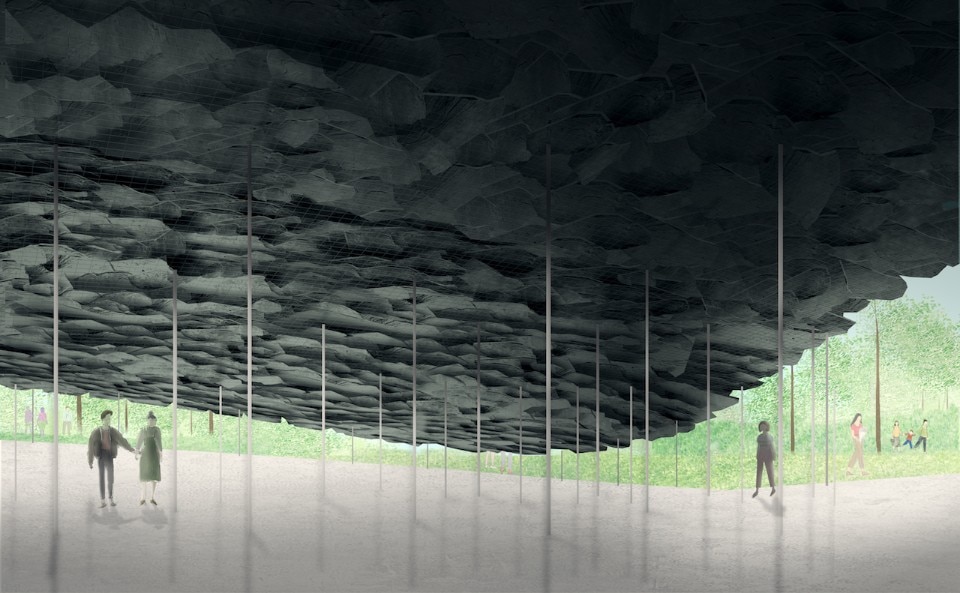This article was originally published on Domus 1036, June 2019
The Serpentine Gallery’s unique annual Summer Pavilion programme in London provides a global platform for experimental projects. Showcasing the work of an international architecture or design practice via a contemporary pavilion temporarily built in Hyde Park, the Serpentine Pavilions have always given expression to innovative, outstanding architectural episodes, since the first edition in 2000 with a design by Zaha Hadid.
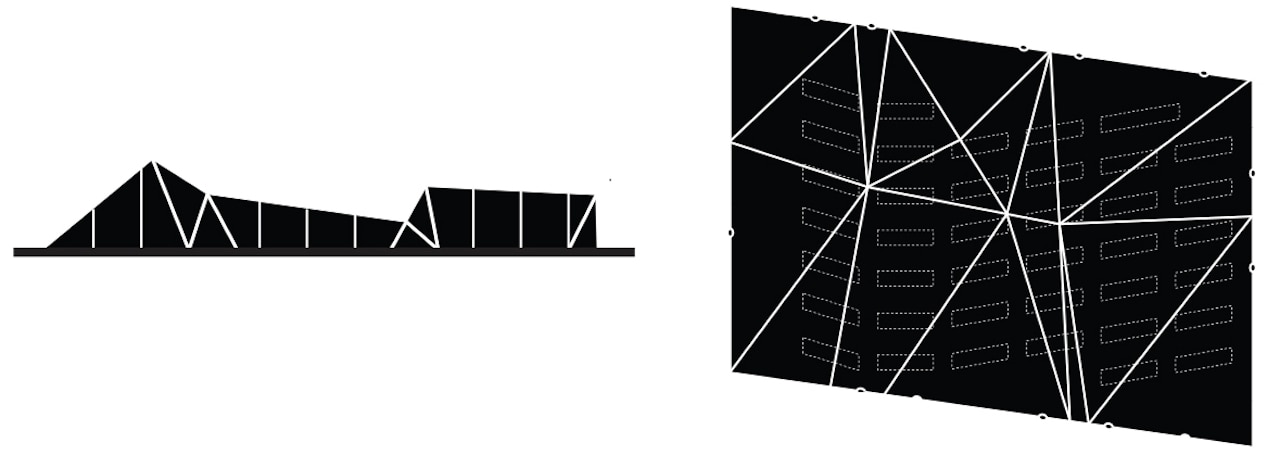
 View gallery
View gallery
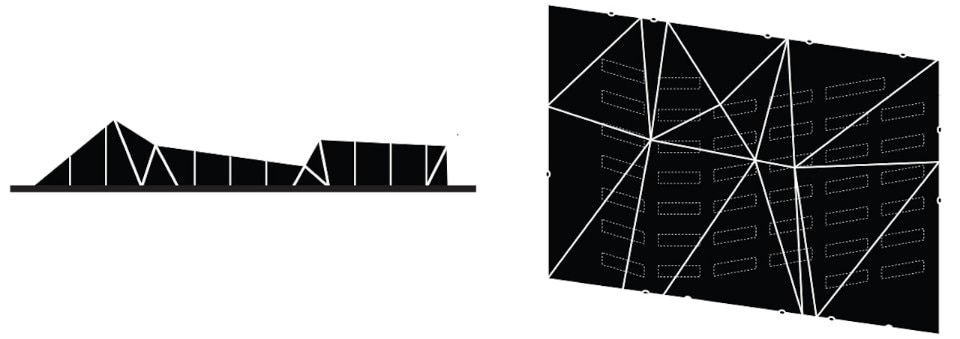
2000, Zaha Hadid Architects
Engineering: Arup
Total floor area: 600 m2
Dimensions: 30 x 20 x 5 m
Structure and materials: tensile fabric panels supported by a steel frame
Current location: Helston, UK
Buyer: Flambards Theme Park
Current programme: private events

2001, Studio Daniel Libeskind
Engineering: Arup
Total floor area: 400 m2
Dimensions: 27 x 16 x 5 m
Structure and materials: steel structure clad in aluminium panels
Current location: unknown
Buyer: anonymous
Current programme: unknown
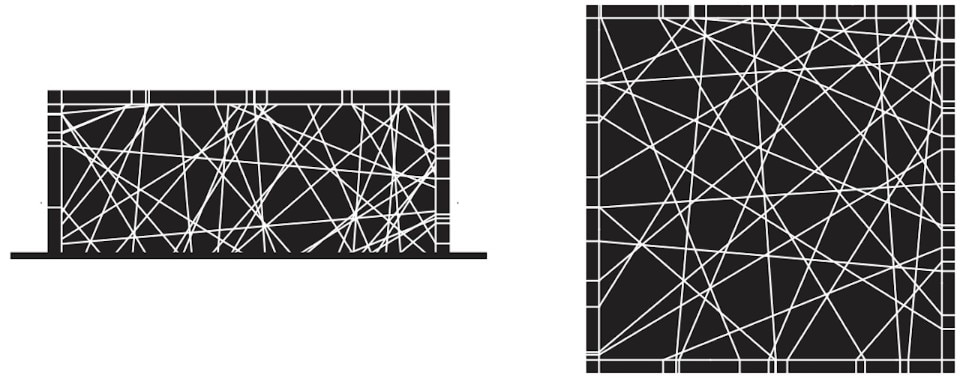
2002, Toyo Ito & Associates, Cecil Balmond
Engineering: Arup
Total floor area: 310 m2
Dimensions: 17.5 x 17.5 x 6.7 m
Structure and materials: steel structure, 380 glass and aluminium panels
Current location: Hotel Le Beauvallon, Saint-Tropez, France Buyer: Victor Hwang, Parkview International
Current programme: private events
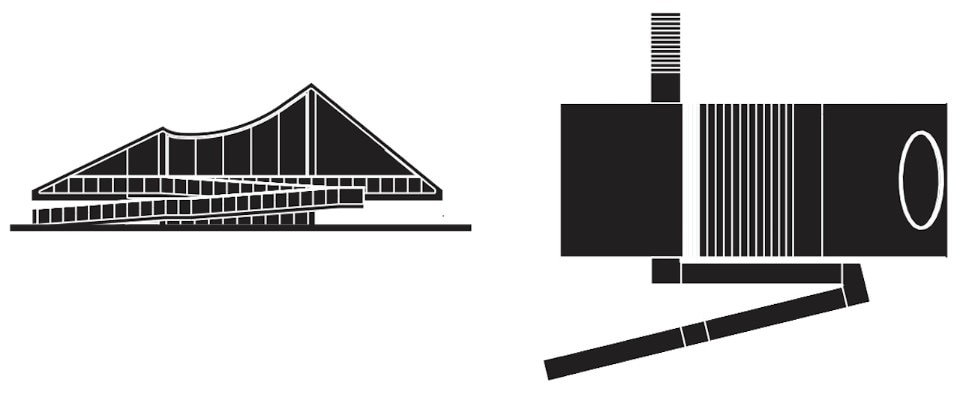
2003, Oscar Niemeyer
Engineering: Arup
Total floor area: 300 m2
Dimensions: 25 x 12 x 8.5 m
Structure and materials: tent-shaped structure made from steel, aluminium, concrete and glass
Current location: unknown
Buyer: anonymous
Current programme: private collection
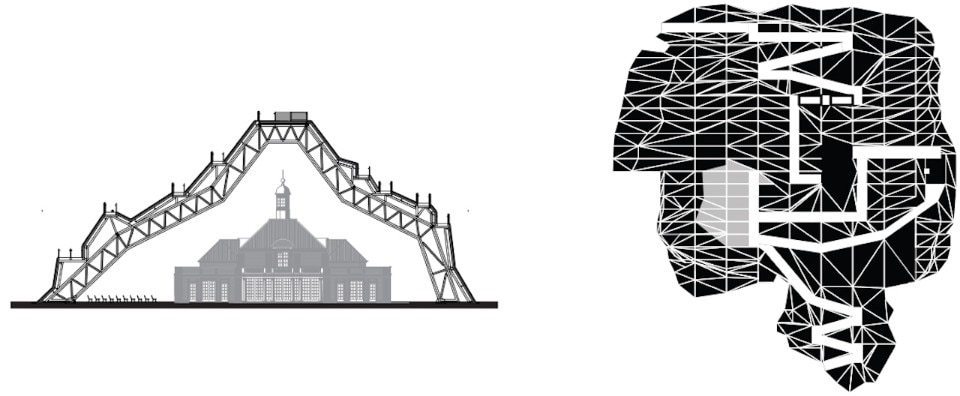
2004, MVRDV (unbuilt)
Total floor area: 2,300 m2
Dimensions: 61.5 x 54.4 x 23 m
Structure and materials: steel trusses, earth and grass roof

2005, Álvaro Siza, Eduardo Souto de Moura
Engineering: Cecil Balmond, Arup
Total floor area: 544 m2
Dimensions: 32 x 17 x 6 m
Structure and materials: structure with wooden interlocking elements, vaulted grid clad with translucent panels
Current location: unknown
Buyer: anonymous
Current programme: private collection
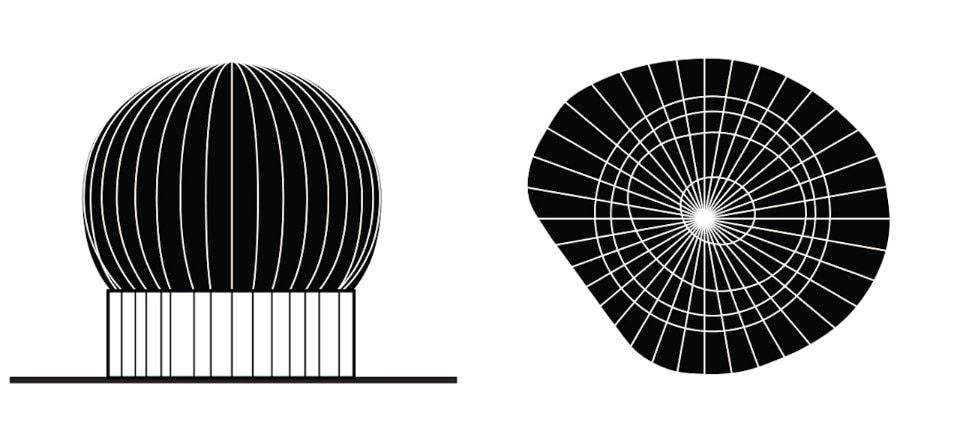
2006, Rem Koolhaas – OMA, Cecil Balmond
Engineering: Arup
Total floor area: 346 m2
Dimensions: 22 x 22 x 24 m
Structure and materials: semitransparent PVC air-filled membrane, polycarbonate sheet walls
Current location: unknown
Buyer: anonymous (£750,000)
Current programme: private collection

2007, Olafur Eliasson, Kjetil Thorsen
Engineering: Arup
Total floor area: 490 m2
Dimensions: 25 x 25 x 14.5 m
Structure and materials: steel structrure clad with triangular wood panels
Current location: unknown
Buyer: anonymous
Current programme: private collection

2008, Gehry Partners, LLP
Engineering: Arup
Total floor area: 550 m2
Dimensions: 38.5 x 30 x 16 m
Structure and materials: hanging glass roof, steel and timber structure
Current location: Aix-en-Provence, France
Buyer: Paddy McKillen
Current programme: concerts and events

2009, SANAA – Kazuyo Sejima, Ryue Nishizawa
Engineering: Arup
Total floor area: 557 m2
Dimensions: 43 x 32 x 4 m
Structure and materials: monolithic aluminium roof, 115 steel columns
Current location: unknown
Buyer: anonymous
Current programme: unknown
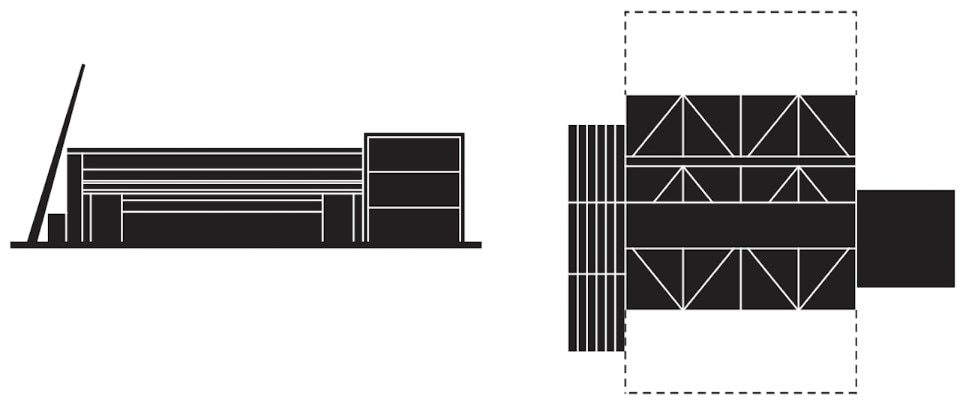
2010, Ateliers Jean Nouvel
Engineering: Arup
Total floor area: 500 m2
Dimensions: 25.5 x 23 x 12 m
Structure and materials: glass, polycarbonate and fabric, retractable awnings
Current location: unknown
Buyer: anonymous
Current programme: unknown

2011, Peter Zumthor
Engineering: Arup
Total floor area: 390 m2
Dimensions: 20.5 x 6.8 x 5 m
Structure and materials: lightweight timber frame with black coating
Current location: unknown
Buyer: anonymous
Current programme: unknown

2012, Herzog & de Meuron, Ai Weiwei
Engineering: Arup
Total floor area: 435 m2
Dimensions: 22.4 x 22.4 x 2.7 m
Structure and materials: 12 loadbearing columns, cork finishing
Current location: Surrey, UK
Buyer: Usha and Lakshmi Mittal
Current programme: private collection
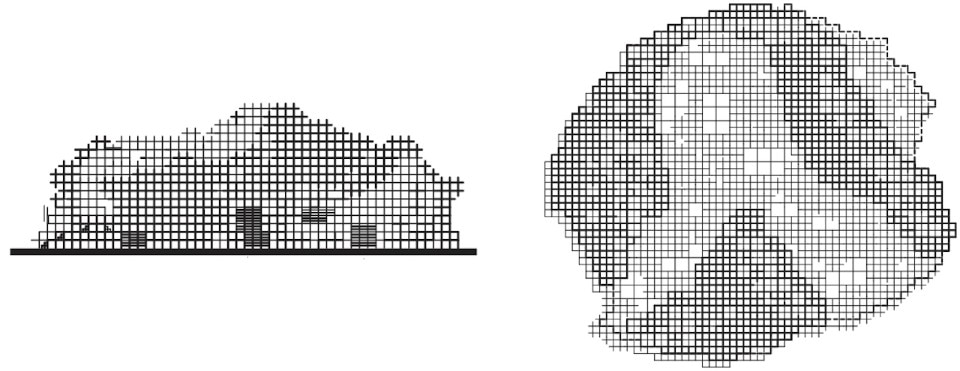
2013, Sou Fujimoto Architects
Engineering: AECOM
Total floor area: 357 m2
Dimensions: 24 x 24 x 8 m
Structure and materials: 2,600 steel grid cubes with square tubular section
Current location: Tirana, Albania
Buyer: Luma Foundation (£ 500,000)
Current programme: art installation
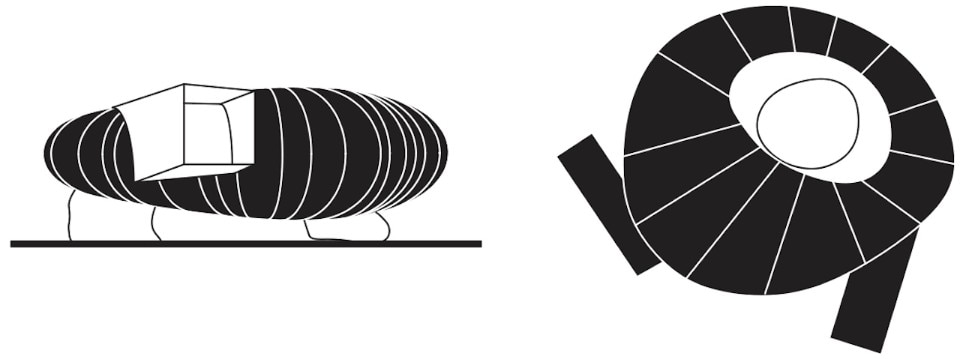
2014, Smiljan Radić
Engineering: AECOM
Total floor area: 350 m2
Dimensions: 20 x 20 x 6 m
Structure and materials: glass-fibre reinforced plastic shell, steel structure
Current location: Somerset, UK
Buyer: Hauser & Wirth (£ 450,000)
Current programme: art installation
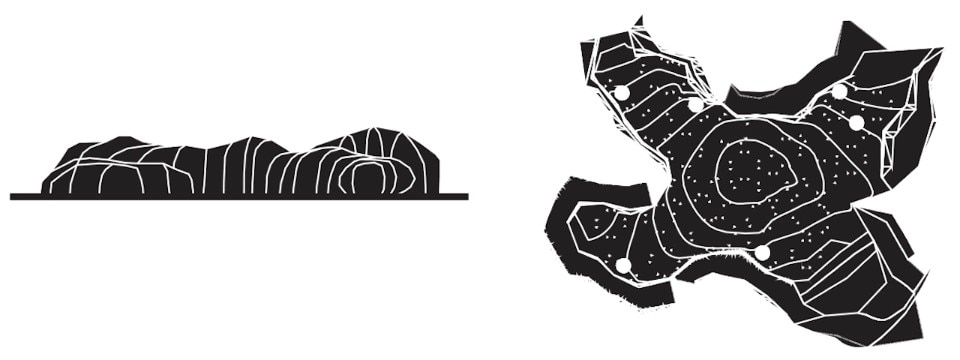
2015, SelgasCano
Engineering: AECOM
Total floor area: 264 m2
Dimensions: 27 x 27 x 4.6 m
Structure and materials: tessuto strutturale e tubolari in acciaio
Current location: Los Angeles, California, USA
Buyer: Second Home
Current programme: public talks and events
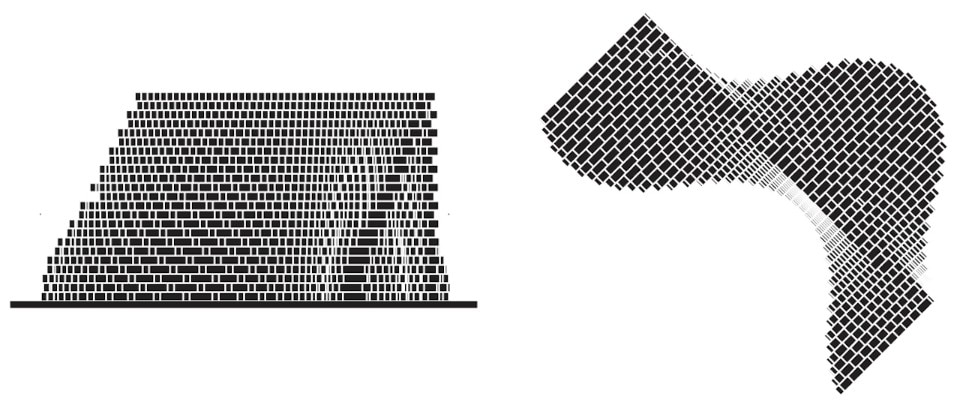
2016, Bjarke Ingels Group (BIG)
Engineering: AKTII, AECOM
Total floor area: 273 m2
Dimensions: 27 x 12 x 14 m
Structure and materials: 1,802 fibreglass boxes, cross profile aluminium joints
Current location: Vancouver, Canada
Buyer: Westbank
Current programme: art installation
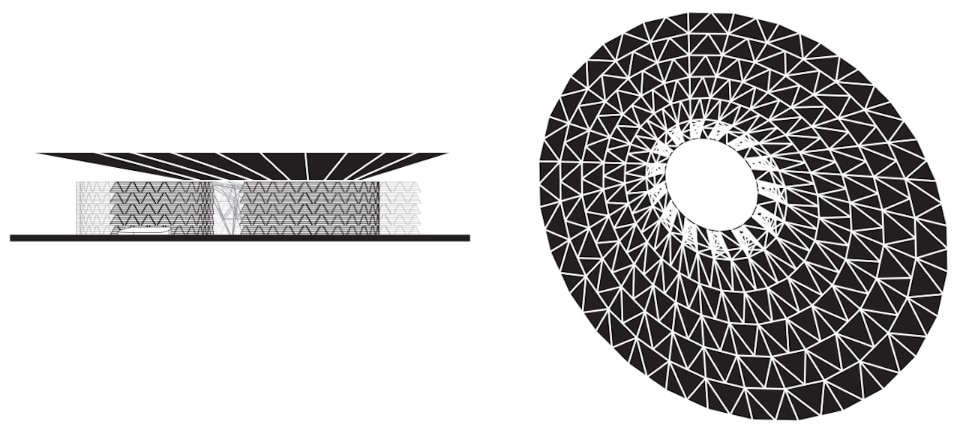
2017, KéréArchitecture
Engineering: AECOM
Total floor area: 330 m2
Dimensions: 24.1 x 20.2 x 4.8 m
Structure and materials: modular triangular timber units, steel roof
Current location: Kuala Lumpur, Malaysia
Buyer: Ilham Gallery
Current programme: art installation
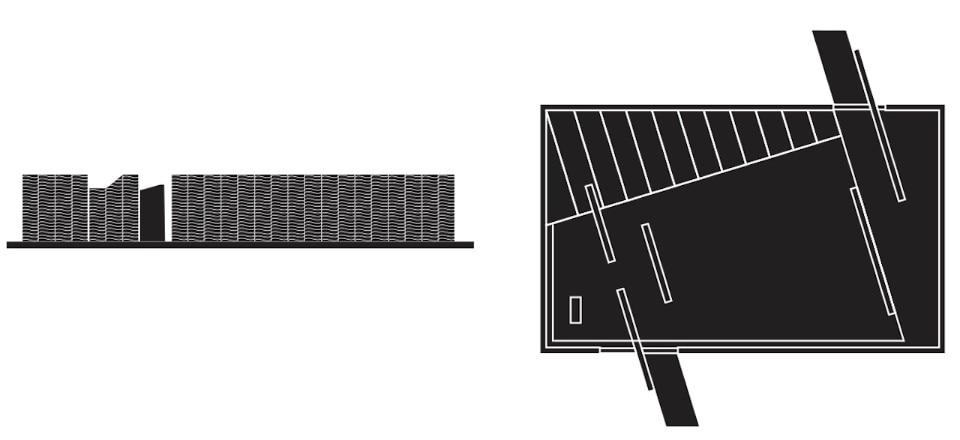
2018, Frida Escobedo, Taller de Arquitectura
Engineering: AECOM
Total floor area: 257 m2
Dimensions: 17 x 9.5 x 3.2 m
Structure and materials: concrete roof tiles, steel Vierendeel frames
Current location: Singapore
Buyer: Therme Group
Current programme: art installation

2019, Junya Ishigami + Associates
Ingegneria/Engineering: AECOM
Total floor area: 350 m2
Dimensions: 33.8 x 23.8 x 5 m
Structure and materials: steel frame structure, concrete floor, solid steel columns (ø 48 mm), solid steel beams, a steel mesh and stones
Current location: Kensington Gardens, Hyde Park

2000, Zaha Hadid Architects
Engineering: Arup
Total floor area: 600 m2
Dimensions: 30 x 20 x 5 m
Structure and materials: tensile fabric panels supported by a steel frame
Current location: Helston, UK
Buyer: Flambards Theme Park
Current programme: private events

2001, Studio Daniel Libeskind
Engineering: Arup
Total floor area: 400 m2
Dimensions: 27 x 16 x 5 m
Structure and materials: steel structure clad in aluminium panels
Current location: unknown
Buyer: anonymous
Current programme: unknown

2002, Toyo Ito & Associates, Cecil Balmond
Engineering: Arup
Total floor area: 310 m2
Dimensions: 17.5 x 17.5 x 6.7 m
Structure and materials: steel structure, 380 glass and aluminium panels
Current location: Hotel Le Beauvallon, Saint-Tropez, France Buyer: Victor Hwang, Parkview International
Current programme: private events

2003, Oscar Niemeyer
Engineering: Arup
Total floor area: 300 m2
Dimensions: 25 x 12 x 8.5 m
Structure and materials: tent-shaped structure made from steel, aluminium, concrete and glass
Current location: unknown
Buyer: anonymous
Current programme: private collection

2004, MVRDV (unbuilt)
Total floor area: 2,300 m2
Dimensions: 61.5 x 54.4 x 23 m
Structure and materials: steel trusses, earth and grass roof

2005, Álvaro Siza, Eduardo Souto de Moura
Engineering: Cecil Balmond, Arup
Total floor area: 544 m2
Dimensions: 32 x 17 x 6 m
Structure and materials: structure with wooden interlocking elements, vaulted grid clad with translucent panels
Current location: unknown
Buyer: anonymous
Current programme: private collection

2006, Rem Koolhaas – OMA, Cecil Balmond
Engineering: Arup
Total floor area: 346 m2
Dimensions: 22 x 22 x 24 m
Structure and materials: semitransparent PVC air-filled membrane, polycarbonate sheet walls
Current location: unknown
Buyer: anonymous (£750,000)
Current programme: private collection

2007, Olafur Eliasson, Kjetil Thorsen
Engineering: Arup
Total floor area: 490 m2
Dimensions: 25 x 25 x 14.5 m
Structure and materials: steel structrure clad with triangular wood panels
Current location: unknown
Buyer: anonymous
Current programme: private collection

2008, Gehry Partners, LLP
Engineering: Arup
Total floor area: 550 m2
Dimensions: 38.5 x 30 x 16 m
Structure and materials: hanging glass roof, steel and timber structure
Current location: Aix-en-Provence, France
Buyer: Paddy McKillen
Current programme: concerts and events

2009, SANAA – Kazuyo Sejima, Ryue Nishizawa
Engineering: Arup
Total floor area: 557 m2
Dimensions: 43 x 32 x 4 m
Structure and materials: monolithic aluminium roof, 115 steel columns
Current location: unknown
Buyer: anonymous
Current programme: unknown

2010, Ateliers Jean Nouvel
Engineering: Arup
Total floor area: 500 m2
Dimensions: 25.5 x 23 x 12 m
Structure and materials: glass, polycarbonate and fabric, retractable awnings
Current location: unknown
Buyer: anonymous
Current programme: unknown

2011, Peter Zumthor
Engineering: Arup
Total floor area: 390 m2
Dimensions: 20.5 x 6.8 x 5 m
Structure and materials: lightweight timber frame with black coating
Current location: unknown
Buyer: anonymous
Current programme: unknown

2012, Herzog & de Meuron, Ai Weiwei
Engineering: Arup
Total floor area: 435 m2
Dimensions: 22.4 x 22.4 x 2.7 m
Structure and materials: 12 loadbearing columns, cork finishing
Current location: Surrey, UK
Buyer: Usha and Lakshmi Mittal
Current programme: private collection

2013, Sou Fujimoto Architects
Engineering: AECOM
Total floor area: 357 m2
Dimensions: 24 x 24 x 8 m
Structure and materials: 2,600 steel grid cubes with square tubular section
Current location: Tirana, Albania
Buyer: Luma Foundation (£ 500,000)
Current programme: art installation

2014, Smiljan Radić
Engineering: AECOM
Total floor area: 350 m2
Dimensions: 20 x 20 x 6 m
Structure and materials: glass-fibre reinforced plastic shell, steel structure
Current location: Somerset, UK
Buyer: Hauser & Wirth (£ 450,000)
Current programme: art installation

2015, SelgasCano
Engineering: AECOM
Total floor area: 264 m2
Dimensions: 27 x 27 x 4.6 m
Structure and materials: tessuto strutturale e tubolari in acciaio
Current location: Los Angeles, California, USA
Buyer: Second Home
Current programme: public talks and events

2016, Bjarke Ingels Group (BIG)
Engineering: AKTII, AECOM
Total floor area: 273 m2
Dimensions: 27 x 12 x 14 m
Structure and materials: 1,802 fibreglass boxes, cross profile aluminium joints
Current location: Vancouver, Canada
Buyer: Westbank
Current programme: art installation

2017, KéréArchitecture
Engineering: AECOM
Total floor area: 330 m2
Dimensions: 24.1 x 20.2 x 4.8 m
Structure and materials: modular triangular timber units, steel roof
Current location: Kuala Lumpur, Malaysia
Buyer: Ilham Gallery
Current programme: art installation

2018, Frida Escobedo, Taller de Arquitectura
Engineering: AECOM
Total floor area: 257 m2
Dimensions: 17 x 9.5 x 3.2 m
Structure and materials: concrete roof tiles, steel Vierendeel frames
Current location: Singapore
Buyer: Therme Group
Current programme: art installation

2019, Junya Ishigami + Associates
Ingegneria/Engineering: AECOM
Total floor area: 350 m2
Dimensions: 33.8 x 23.8 x 5 m
Structure and materials: steel frame structure, concrete floor, solid steel columns (ø 48 mm), solid steel beams, a steel mesh and stones
Current location: Kensington Gardens, Hyde Park
Part of these structures’ appeal is that their fleeting characteristics somehow bring the public closer to architecture and art.
Unlike traditional museums, the Serpentine Pavilion is an excellent example of such immediacy of interaction and accessibility: there are no doors or cultural boundaries. “In a society of increasing inequality, everyone can experience architecture first-hand. This is one of the main reasons for the Pavilion’s success,” says the Serpentine’s artistic director Hans Ulrich Obrist.
Attracting up to 250,000 people each summer, the initiative is one of the world’s top ten most visited architectural and design exhibitions. The pavilion’s design qualities are coupled with an engaging functional programme, by operating as a public space, cafe and venue for Park Nights – the gallery’s acclaimed series of public talks and events. The Serpentine’s basic principle has been to call on a renowned architect who has not realised a building in the UK at the time of the commission. But in recent years, it has begun to give voice to younger emerging talents.
Architects of these structures are invited to use materials in innovative ways, experiment with engineering or construction solutions and, increasingly, address architecture’s social impact – such as ecology and sustainability, the relationship between architecture and food, the future of work, smart technologies or artificial intelligence.
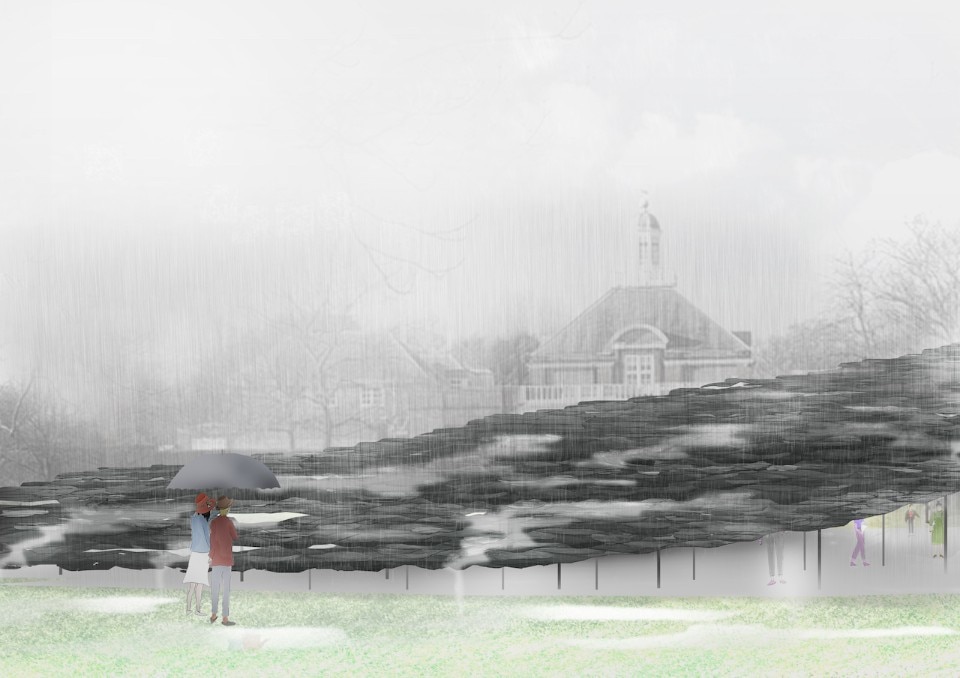
The design of this edition’s pavilion is by Japanese architect Junya Ishigami, whose work, in the words of Obrist, “doesn’t resist the idea of weight, but almost as a miracle aims to defy gravity”. By arranging slates, a single canopy roof emerges from the ground of the surrounding park. Inside, the pavilion is a cave-like space for contemplation. According to the artistic director, this pavilion creates harmony between man-made structures and what exists in nature. Such a holistic (not antagonistic) idea of architecture plays with our perspectives of the built environment in relation to natural landscapes.

Like his predecessors, Ishigami was given six months from invitation to completion. A close collaboration with engineers and consultants is thus crucial for the project’s success. Besides structural analyses and virtual simulations, developing full-scale mock-ups and prototypes is an essential part of the design process for testing the structure’s durability, weather-tightness, strength, fire resistance and appearance. Construction is usually limited to a seven-week period in which the delivery and logistical restrictions must be dealt with to ensure public safety. In this short timeframe, a strategic phased construction plan allows for the multiple construction processes to be undertaken in parallel while erecting the structure with the due quality.
Typically there is no budget for the Serpentine Pavilion. It is paid for by sponsorship, in-kind support and the sale of the finished structure, which, however, covers no more than 40 per cent of the project’s costs. After the summer in Kensington Gardens, the pavilions are dismantled, transported and reassembled for public institutions, private collections or tourist enclaves. Stressing a growing attention towards sustainability, the aim is to reuse all the materials in the new incarnations of the pavilions.
Yet in some cases the second life of these projects tells a sad story. Located at a theme park in Cornwall, Zaha Hadid’s innovative tent-like structure – barely recognisable today – hosts discos and children’s birthday parties. Others don’t get a second chance at all, with no less than four past pavilions now lying in storage. Acquired by a particularly ambitious collector, there are currently no plans to reutilise those structures.

Other pavilions have followed more fortunate paths. Smiljan Radić’s translucent shell, for example, was bought by the Hauser & Wirth gallery and now sits in its surrounding garden hosting public talks and charity events. SelgasCano’s colourful pavilion will be the first to travel to the US, where in Los Angeles it will offer free programmes on art, design, science and nature. BIG’s “unzipped wall” embarked on a tour from Toronto to New York and Shanghai before landing in Vancouver. Oscillating between ephemerality and permanence, the Serpentine Pavilions will continue to transition from a carefully designed and yet short existence in London, to an unpredictable afterlife adapting and in some cases camouflaging themselves – just like butterflies – in their new environment.
Stefano Andreani is a lecturer in Architecture at the Harvard University Graduate School of Design and a designer and consultant at the Invivia studio in Boston. In 2018, he co-edited the Innovation special issue for Domus.
Opening picture: rendering of this year’s Serpentine Pavilion designed by Junya Ishigami. The inside (above) is a free but intimate space conceived as a refuge for contemplation. © Junya Ishigami + Associates


